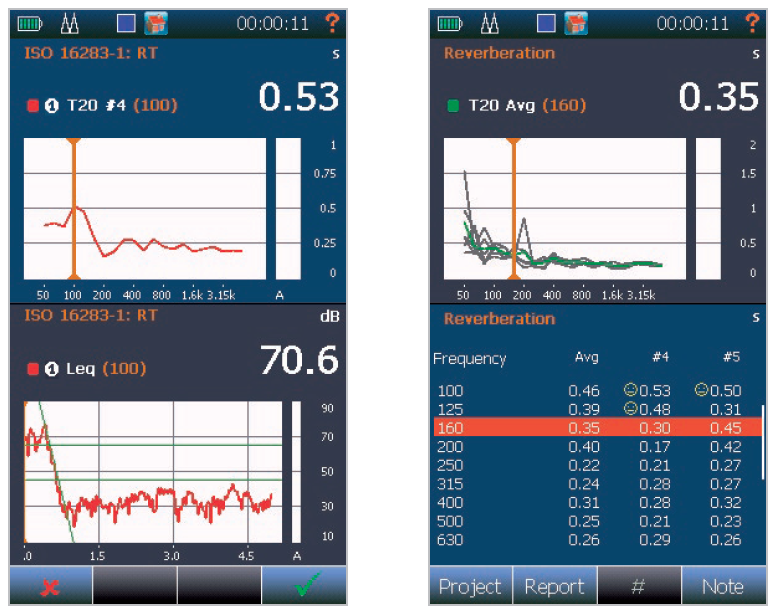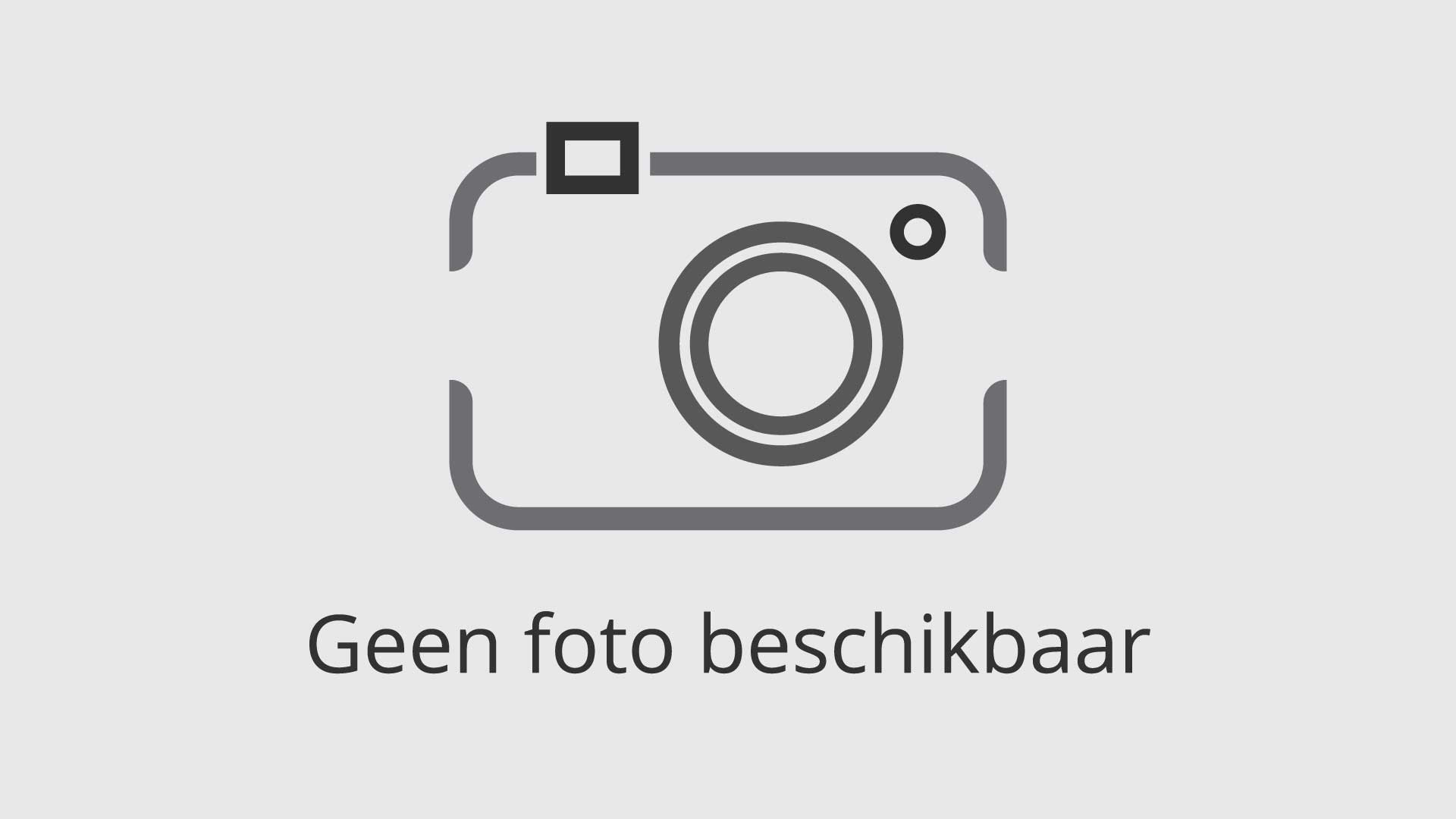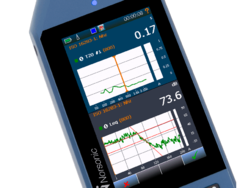reverberation time
Measuring the RT60 reverberation time requires a suitable sound level meter and a sound source to generate an excitation signal.
Suitable sound level meter:
- The sound level meter needs to be able to measure a frequency spectrum in 1/1 and/or 1/3 octave bands
- The sound level meter needs a module / measurement mode to measure the reverberation time from an excitation signal
different types of excitation signals:
- Impulsive noise (a singel short impulse, example: starting pistol, blank handgun shot, party balloon burst, wooden clapper board, .. )
- Broadband random noise (= interrupted noise methode, example: pink or white noise with an omni-directional sound source)
Norsonic sound level meters with a module to measure the reverberation time:
Nor150, Nor145, Nor140:
class 1 sound level meters, reverberation measurements are possible in 1/1 or 1/3 octave bands with an impulsive noise and random noise excitation signal..
Additionally, these instruments also allow the user to store an audio recording of the measurement, and to store and display the decay curves for each frequency band.
Nor131 (class 1) and Nor132 (class 2):
Reverberation measurements are possible in 1/1 or 1/3 octave bands with an impulsive noise excitation signal..

Noise sources to generate a random noise excitation signal:
Nor276 omni-directional sound source with the Nor280 amplifier & noise generator .
What is reverberation time?
Reverberation time (RT60) is equal to the time required for the level of a steady sound to decay by 60 dB after the sound has stopped.
Reverberation time is expressed in seconds.
The reverberation time depends on the amount of sound absorption in a room, the room geometry, and the frequency of the sound.
Reverberation time is frequently stated as a single value. However, being frequency dependent, it can be more precisely described in each individual 1/1 or 1/3 octave frequency band. Being frequency dependent, the reverberation time measured each frequency band will differ.







